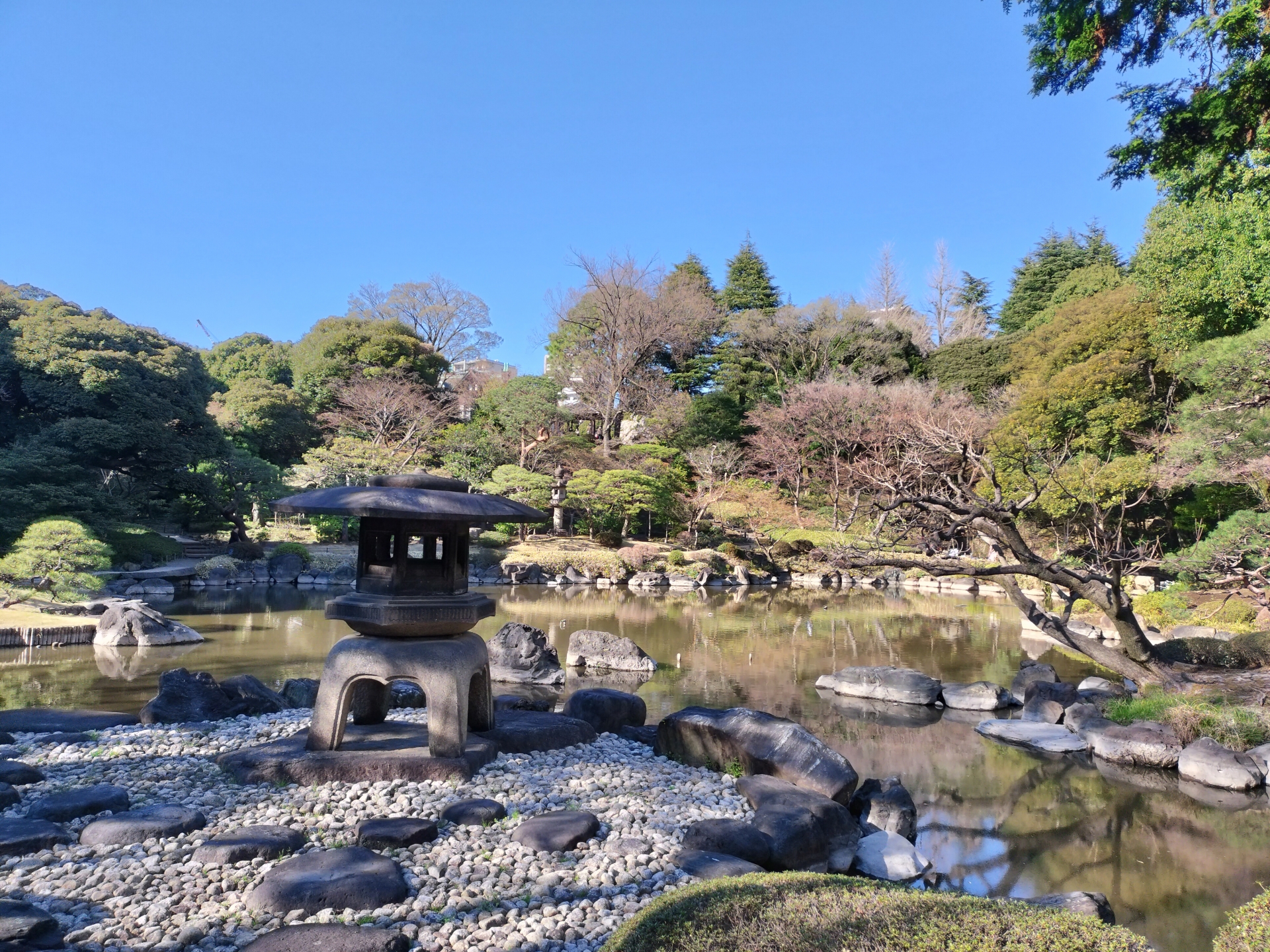「楽庭」神在(かみあり)
出雲流庭園には、庭園の西側に雪見灯ろうが置かれます。雪見灯ろうは、もともと浮見灯ろうと呼ばれ、水面に灯ろうの明かりを映してみることで趣のある灯ろうといわれています。ゆえに笠が大きく、水面に反射させた時にひときわ映えるようになっています。
灯を浮かせて見るとは、いかにも風流な使い方です。それが訛って雪見灯ろうと呼ばれるようになったといわれます。後に、雪見灯ろうは、水辺の近くに必ず置くのが暗黙のルールとなったわけです。たとえ枯山水であっても、水を意味する砂利敷きの近くに配置し、反射した水面の灯が上座から見えるように配置されているのです。

出雲における西の方角は特別な意味があります。それは、旧暦の10月に全国の八百万の神々が西の海から上陸されるからです。大社町の稲佐の浜では、神々をお迎えする神迎神事が行われます。
出雲流庭園では、水を意味する雪見灯ろうが、必ず西側に配置されます。八百万の神をお迎えするこの地の庭園様式に神秘性を感じざるを得ません。

「楽庭」神在は 雪見灯ろうと 飛石を配し 幸運を引き寄せる

